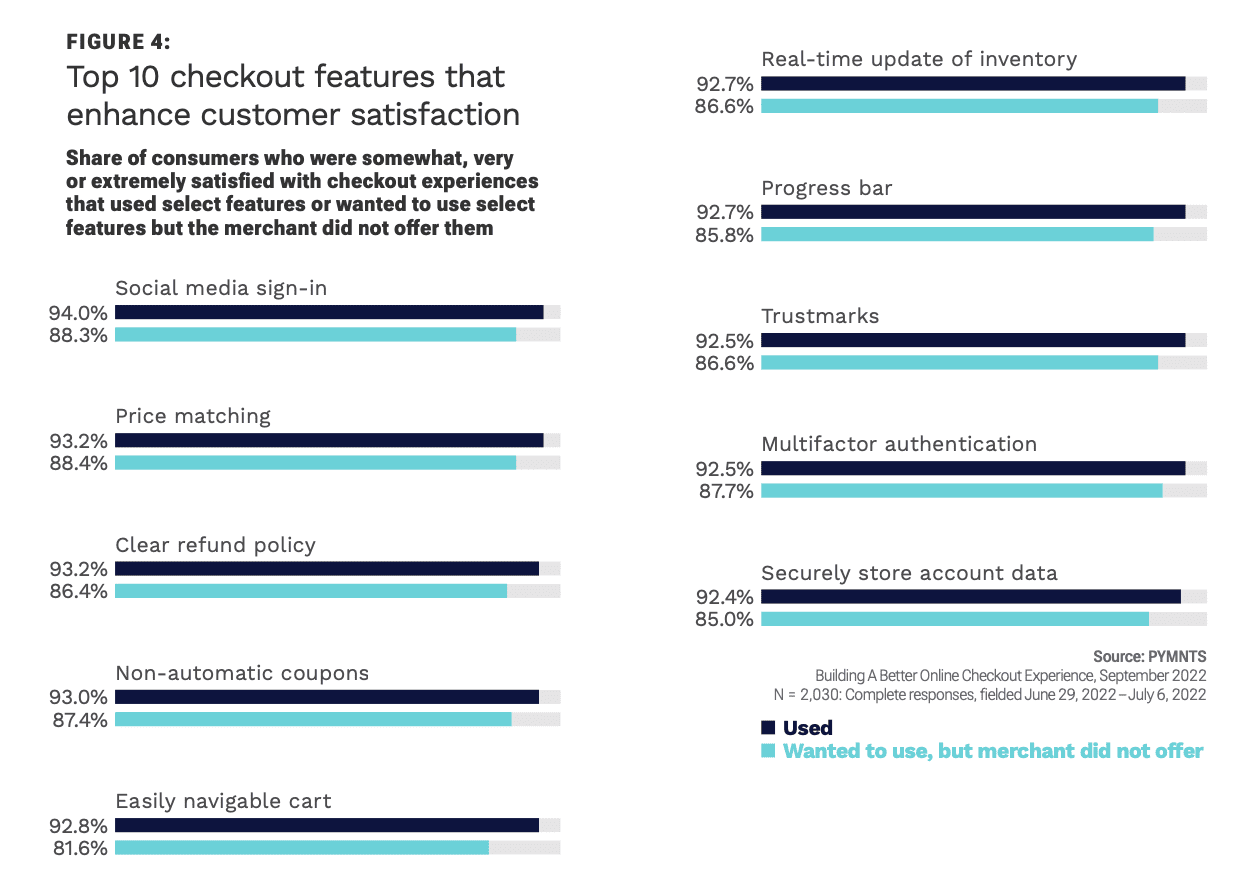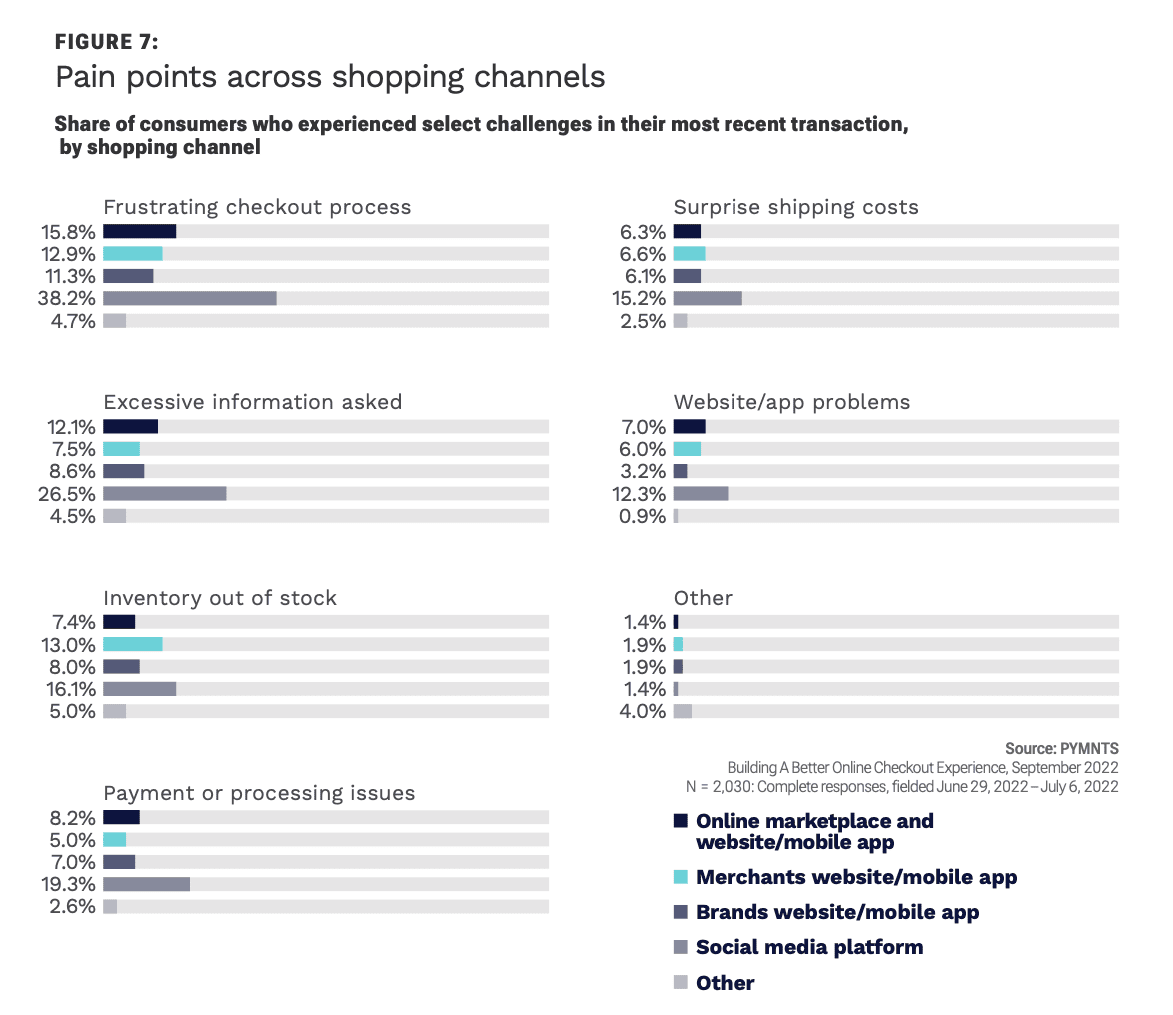90% of Shoppers Say Smooth Checkout Is Make or Break Experience

As much as retail has changed and become increasingly digital, one thing has remained constant throughout the years: the importance of a smooth checkout experience.
Whether it’s a swift and friendly transaction at the cash register or a speedy one-click purchase online, new PYMNTS research underscores the age-old axiom that nothing is more important than not leaving a customer waiting when it’s time to pay.
In fact, according to “Building A Better Online Checkout Experience: The Key Features That Matter To Customers,” a PYMNTS and Checkout.com collaboration based on surveys of over 2,000 U.S. consumers, a whopping 91% of consumers said that a satisfying checkout experience significantly influences the likelihood that they will return to a given merchant, or not.
The high prioritization on the checkout experience not only topped all other factors measured in the survey but stands as a stark make-or-break reminder to retailers of what is really important, especially at a time when sales and conversion are under pressure as a result of the economic stress hitting most consumers.
“If you look at the checkout process today, it’s a big point of friction,” Karma Co-founder and CEO Jonathan Friedman said in a recent interview with PYMNTS discussing his company’s new time and money saving rapid payment solution.
“You need to put in your input, you need to sign up, you need to add your credit or debit card, which is why [merchants] still experience around 75% shopping cart abandonment,” he noted, as the primary catalyst for creating and launching Karma’s single shopping cart experience.
While the payment process is a big and consequential part of a smooth checkout experience, it is not the only thing that impacts customers current and future buying decisions.
In short, all forms of friction can prove lethal, including slow processing speeds, merchants asking for too much identity information, or difficulty applying discount codes to orders.
In total, the study found that nearly three-quarters of consumers used their preferred purchase method in their latest online checkout, more than half of shoppers cited other features, such as easy order confirmation with and security and account data storage mentioned by 60% of respondents.
Among customers who wanted to use certain checkout features but found merchants did not offer them, lack of free shipping is still a top deal breaker, and lowered satisfaction by 14% according to findings.

See: Building A Better Online Checkout Experience: The Key Features That Matter To Customers
Convenience Is Key
Satisfaction often comes down to one thing: convenience.
In a recent interview, Zenni Optical Chief Technology Officer David Ting told PYMNTS’ Karen Webster, “I think Amazon did it right. It’s a customer obsession. If you look at why eCommerce is successful, it’s just the convenience factor,” Ting said, noting that “improving the customer experience by removing barriers to intangibles like trust while creating seamlessness at every step is key.”
Increasingly, “convenience” is defined by consumers as being mobile, and self-service. Consider negative reaction to grocery chain Wegmans’ September decision to shut down its SCAN app, a popular scan-and-go own-device self-service checkout feature.
In a statement emailed to PYMNTS, Wegmans said, “SCAN users have told us they love the app and convenience it offers. Unfortunately, the losses we are experiencing prevent us from continuing to make it available in its current state. We’ve made the decision to turn off the app until we can make improvements that will meet the needs of our customers and business.”
See also: Wegmans Shuts Down Scan-and-Go Checkout Amid ‘Losses’
Given the consumer appetite for features like social media sign-in for online checkout, merchants must weigh issues like shrinkage against consumer expectations for an easy checkout as they define it, or risk losing customers in high numbers.

Checkout.com executive Akin Kayim told PYMNTS that checkout design is now a key point, saying “It can vary from the placement of form fields to colors on the CTA buttons. Having a well-considered design makes this process frictionless and promotes stickiness to encourage the shopper to not only complete, but also come back to the website and have that loyalty.”
Read: The Three Tiny Details That Get Consumers to Click Buy at Checkout
Disruptors in the checkout space are responding to these issues. Ecommerce discounting platform Karma has just launched “Pay With Karma” which does the deal searching for users and delivers that in a frictionless experience that resonates with shoppers.
Karma Co-founder and CEO Jonathan Friedman told PYMNTS it’s still too often the case that “You need to put in your input, you need to sign up, you need to add your credit or debit card, which is why [merchants] still experience around 75% shopping cart abandonment.”
For all PYMNTS retail coverage, subscribe to the daily Retail Newsletter.